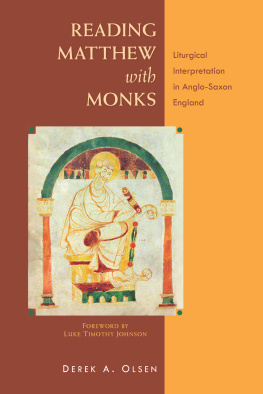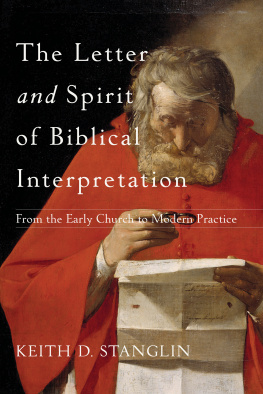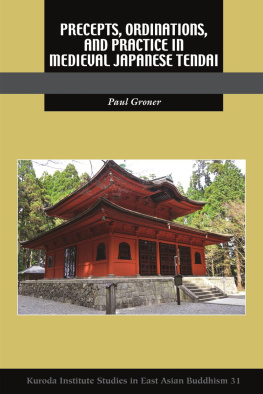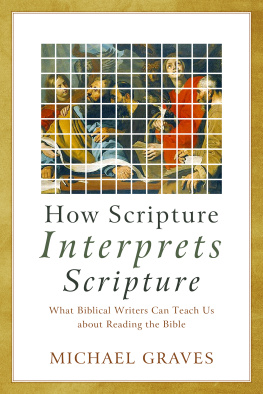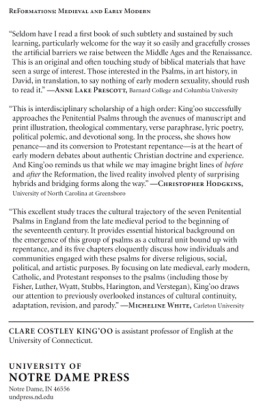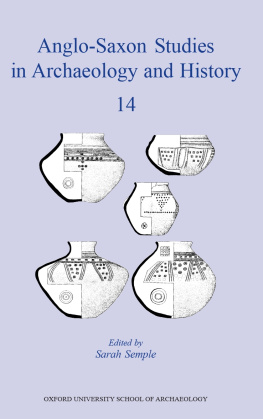With an impressive mastery of the primary sources, Dr. Olsen offers a detailed yet accessible account of the liturgical contexts that shaped the exegesis of one late tenth-century English monk, lfric of Eynsham. By close analysis of four Old English homilies on the gospel of Matthew, Olsen contributes to a growing body of scholarship that takes lfric seriously as an original theologian, not just a compiler of patristic authorities. Approaching lfrics writings from the vantage point of a New Testament scholar, moreover, Dr. Olsen is well placed to observe some broader tendencies in lfrics hermeneutics that previous scholars have missed.
Christopher A. Jones
Professor, Department of English
Ohio State University
Derek A. Olsen has broken new ground in the field of biblical studies. For years Christians serious about the foundations of their faith have pleaded for the kind of work Olsen has produced, but theologians and biblical scholars have typically responded either by merely nodding silently or, at most, by quoting a handful of patristic and medieval writers in their explorations and commentaries. Olsens thesis, carefully researched and elegantly and clearly written, is nothing less than the one and only substantial sequel to Jean Leclercqs The Love of Learning and the Desire for God. Monastic men and women reading the first two chapters will have an experience of self-discovery: So this is what monastic culture is all about.
Mark A. Scott, OCSO, SSL
Abbot
New Melleray Abbey
Reading Matthew with Monks invites contemporary students of the Bible to read Matthew in conversation with Benedictine monks of medieval England. The surprising result of this generative conversation is that, at the same time that contemporary readers learn much about the liturgically framed reading practices of the monks, we may actually learn more from them about how to expand and deepen our own reading practices.
Gail R. ODay
Dean and Professor of New Testament and Preaching
Wake Forest University School of Divinity
In Reading Matthew with Monks, Derek Olsen invites us into a conversation with the communion of saints, both living and dead. This communal reading across time and space is grounded in careful scholarshipmedieval and modernwhile bringing alive the faith experiences of those who, then and now, read and perform the Scriptures. In particular, Olsen demonstrates the central but much neglected role that liturgy played in early medieval monastic interpretive communities. In restoring that performative context for reading Scripture, he corrects the misguided modern notion that early medieval Europe lacked a commentary tradition but was merely derivative. Indeed, Olsen succeeds in taking one prolific Anglo-Saxon homiletic writer, lfric of Eynsham, and makes him the equal of modern biblical scholars brought into the dialogue on select passages of the Gospel of Matthew, including the paradigmatic Beatitudes from Jesus Sermon on the Mount. The exciting challenge of this book is the invitation to continue the conversation.
Karen Louise Jolly
Professor of History, University of Hawaii Mnoa
Author of The Community of St. Cuthbert in the Late Tenth Century
Derek Olsens study of biblical interpretation at the hands of the medieval monk lfric of Eynsham strikes just the right balance. He suggests that todays serious work with biblical texts is competent to answer certain questions and then shows how alternative approaches enrich how we engage those texts spiritually and theologically. He drills down into the interpretive sensibilities and practices of a single monk yet contextualizes that work so that we are challenged by them. Whether read as an expanded chapter in the history of biblical interpretation or as an exemplar on how theological interpreters might learn from premodern readings of Scripture, this is a welcome contribution.
Joel B. Green
Dean of the School of Theology
Fuller Theological Seminary
Reading Matthew with Monks introduces us modern readers into this distinct culture of medieval liturgy and teaches us to catch the voice and the thoughts of those monks who not only read but truly strove to live the Gospel.
Wim Verbaal
Latin Language and Literature
University of Ghent, Belgium
A Michael Glazier Book published by Liturgical Press
Cover design by Jodi Hendrickson. Illustration from the Historisches Archiv der Stadt Kln, HAStK 7010 147, f. 7v-8r. Photo by the Hill Museum & Manuscript Library. Used by permission.
2015 by Order of Saint Benedict, Collegeville, Minnesota. All rights reserved. No part of this book may be reproduced in any form, by print, microfilm, microfiche, mechanical recording, photocopying, translation, or by any other means, known or yet unknown, for any purpose except brief quotations in reviews, without the previous written permission of Liturgical Press, Saint Johns Abbey, PO Box 7500, Collegeville, Minnesota 56321-7500. Printed in the United States of America.
The Library of Congress has cataloged the printed edition as follows:
Library of Congress Cataloging-in-Publication Data
Olson, Derek A.
Reading Matthew with monks : liturgical interpretation in Anglo-Saxon England / Derek A. Olson ; Foreword by Luke Timothy Johnson.
pages cm
A Michael Glazier book.
Includes bibliographical references.
ISBN 978-0-8146-8317-0 ISBN 978-0-8146-8342-2 (ebook)
1. Bible. MatthewSermons. 2. BibleCriticism, interpretation, etc.History. 3. Aelfric, Abbot of Eynsham. I. Johnson, Luke Timothy, writer of foreword. II. Title.
BS2575.54.O47 2015
226.2060942dc23
2014043815
Contents
Foreword
Luke Timothy Johnson
In this superb study of medieval liturgical interpretation of the Gospel of Matthew, Derek Olsen makes an important contribution to a growing movement among biblical scholars, namely, paying serious attention to the history of interpretation. This movement, I am convinced, is more than a fad driven by boredom and frustration at the meager yield of obsessive historical criticism of Scripture or the hunger for less trampled territory to explore. It is inspired by the simple conviction that the world that shaped the Bibleso sedulously examined by historical criticsis ultimately less interesting and significant than the world that the Bible shapes. Scripture imagines a world that centuries of believers have entered and, through embodied practices, made their own. Biblical scholars are beginning to appreciate that the history of interpretation is of genuine significance even for their traditional task of exegesis: the way in which scriptural texts were used and understood within the tradition not only tells us about the perceptions of interpreters but also reveals the rich polyvalence of the texts themselves. How passages were understood helps show how they can be understood.
Although the patristic interpretation of Scripture has long been analyzed and applauded, medieval interpretation continues to be widely regarded as derivative and undistinguished. This, despite Henri de Lubacs universally admired study, Medieval Exegesis. Indeed, the massive size and apparent comprehensiveness of de Lubacs work may have encouraged the sense that all other investigators would find among medieval interpreters would be what de Lubac had already discovered. But while de Lubac pointed the way to an appreciation of medieval interpretation, by no means did he exhaust the subject, especially since he paid relatively little attention to the true center of interpretive creativity in the Middle Ages, the liturgy.

